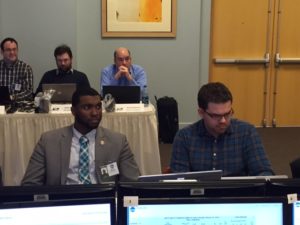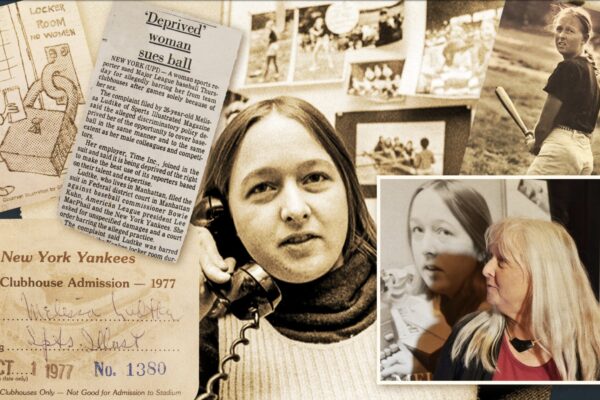(Editor’s Note: Graduate student Ralan Wardlaw became the second IUPUI student to receive voting privileges during the NCAA Mock Selection Exercise that was held for media members last month at the National Headquarters. He described his impressions of the experience.)
By Ralan Wardlaw | @Ray_Law12
Sports Capital Journalism Program
INDIANAPOLIS — When the brackets for the NCAA men’s basketball tournament are revealed on Sunday evening, conventional wisdom says this is when the madness in March Madness starts. However, the madness for one group of people begins in November when the first games are played.
Members of the Division I Men’s Basketball Committee are assigned conferences throughout the year. Each member closely examines each team in the assigned conference throughout the season to determine which teams should be under consideration for a berth in the tournament.

IUPUI student Ralan Wardlaw (left) with partner Reid Forgrave of foxsports.com at the NCAA mock selection exercise.
The committee is scrutinized every year when a specific team is left out of the field. Those who criticize the selection process are typically not well versed on how the selections are made. The NCAA developed a way to help those involved with the college game better understand how the tournament field is selected. The NCAA created a Mock Selection process that takes place one month before the actual selections are made.
The NCAA Mock Selection Exercise for this season took place on February 12-13 in Indianapolis at the NCAA headquarters. Media members from coast to coast were able to take part in a two-day event that was a shortened version of what the selection committee does before the bracket is revealed.
The process for selecting teams and assigning tournament locations is not as simple as I once thought. Each team considered for an at-large spot is analyzed individually, so the human element is a big part of the process. The human aspect is important to the process because not every person in the room values the same metrics equally. Some committee members value RPI rankings highly, while others are more likely to look at strength of schedule for each team. The different priorities and approaches led to debates as many of the teams were being discussed.
When it comes to locations, the top four seeds in each region get location preference. It is not as simple as just putting the school in the closest venue, though. Complications such as the requirement to separate members of the same conference go into selecting the site assignments for each team.
Some of the aspects of the selection committee’s duties were simulated due to the limited time we were together. The main takeaway I had was the fact that the committee does not try to create matchups or ensure certain players are in the field. During our selections, Louisiana State, with its freshman star Ben Simmons, came up in discussion. Fans around the country would love to see him in the tournament due to his elite-level skills, but the committee does not take individual players into account. It is always about the team in the selection room.
Before taking part in this event, I thought I knew what the committee had on its mind. I would say things like, “It’s not that hard to seed these teams,” or “They gave that team an easy road to the Final Four.” I was far off in my judgment of the process. The two days I spent in the selection room provided an education I will never forget.


